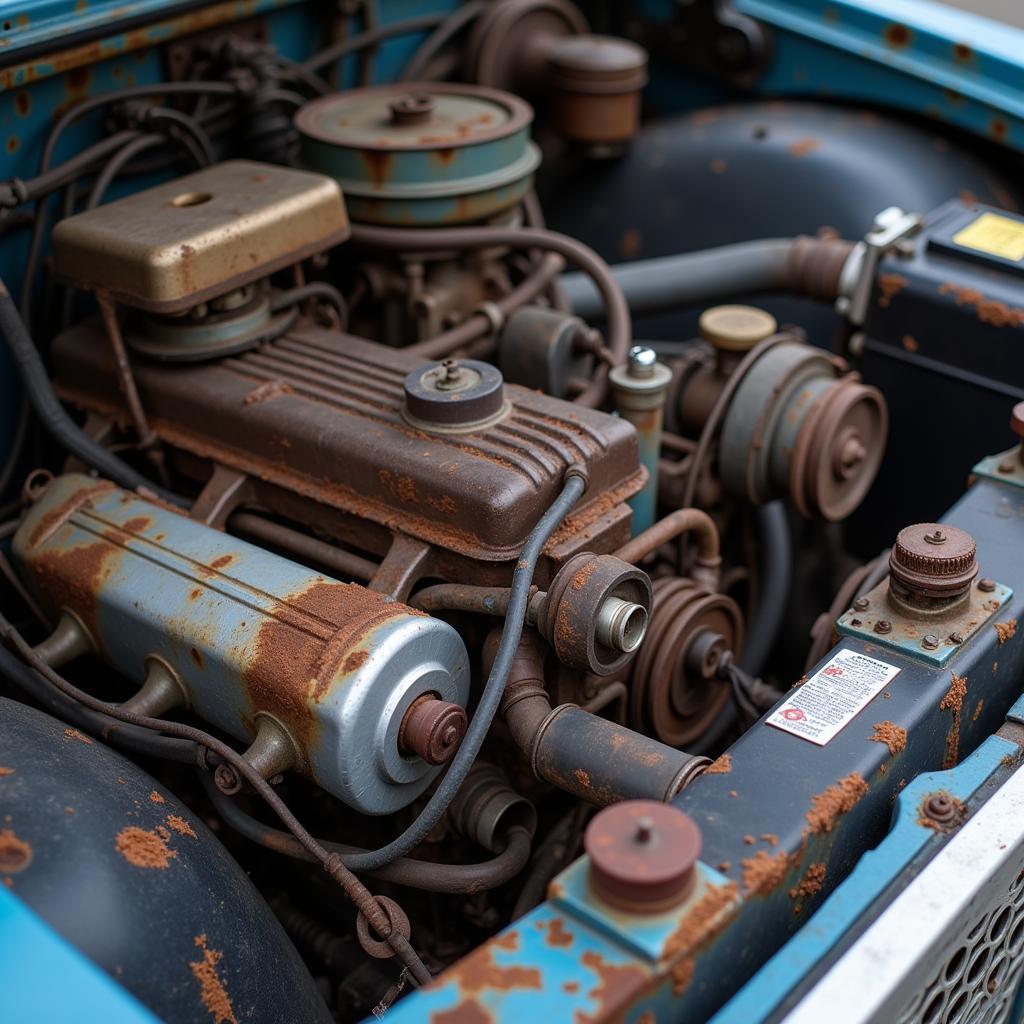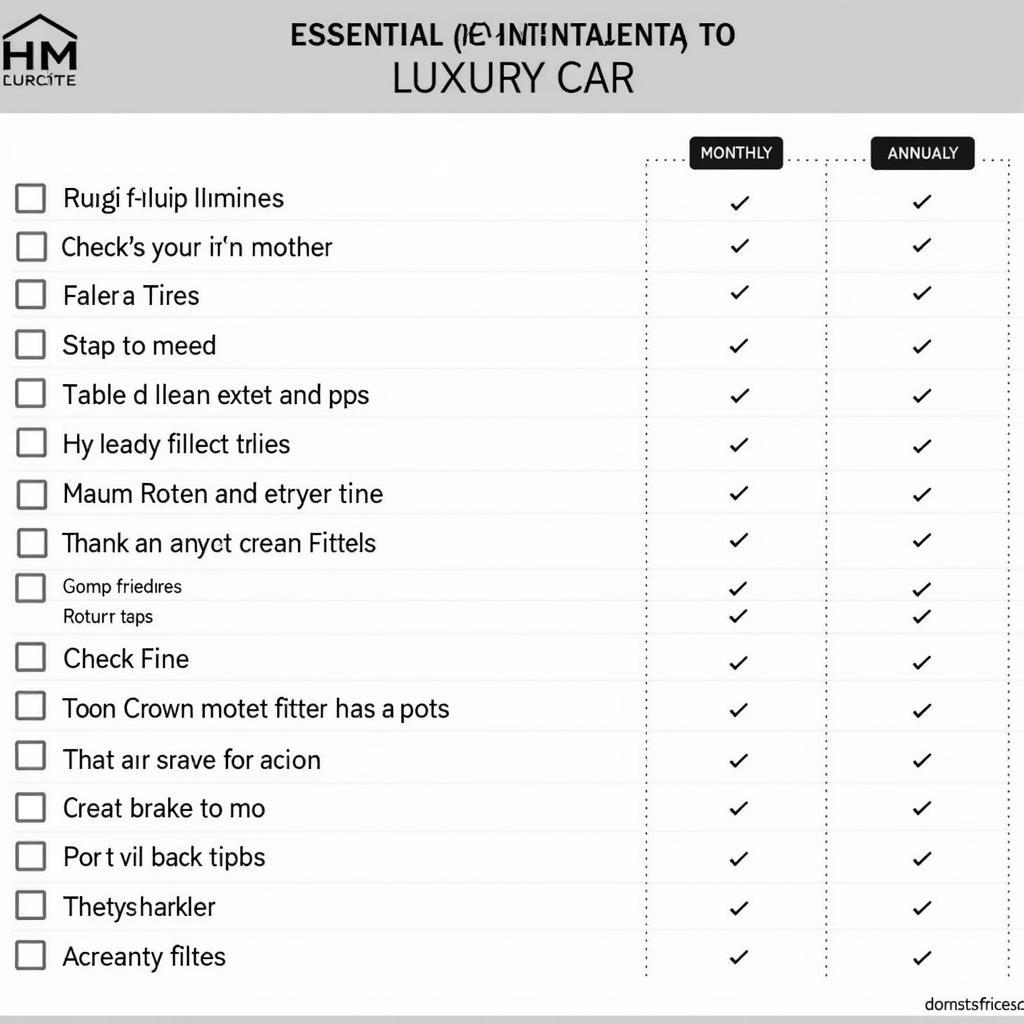Pinstripe bleed through is a common issue car owners face, often appearing as a ghost-like shadow underneath the pinstripe, especially on older vehicles. This frustrating problem occurs when the solvents in the pinstripe material seep into the car’s clear coat over time. But don’t worry, fixing pinstripe bleed through is achievable, and with the right approach, you can restore your car’s paint to its former glory. This guide will provide you with all the information you need to tackle this issue, whether you’re a seasoned DIYer or prefer the help of a professional.
Understanding Pinstripe Bleed Through
Before diving into solutions, it’s important to understand what causes pinstripe bleed through. This issue typically arises due to:
- Low-Quality Pinstripe Material: Cheap pinstripes often contain aggressive solvents that are more likely to penetrate the clear coat, leading to bleed through over time.
- UV Exposure: Prolonged exposure to the sun’s harmful UV rays can degrade both the pinstripe and the clear coat, accelerating the bleeding process.
- Improper Application: If the pinstripe wasn’t applied to a perfectly clean and prepped surface, the adhesive may not bond properly, increasing the risk of solvent migration.
DIY Solutions for Pinstripe Bleed Through
For those comfortable with hands-on work, several DIY methods can effectively address pinstripe bleed through:
1. Polishing
Polishing is often the first line of defense. A high-quality automotive polish, coupled with a dual-action polisher, can remove a significant amount of the affected clear coat, minimizing the appearance of bleed through.
-
What You’ll Need:
- Dual-action polisher
- Polishing pads (medium and fine grade)
- Automotive polishing compound
- Microfiber towels
- Masking tape
-
Steps:
- Thoroughly wash and dry the affected area.
- Mask off the pinstripe to protect it from the polisher.
- Apply a small amount of polish to the medium-grade pad.
- Work the polisher in slow, overlapping passes, applying moderate pressure.
- Gradually reduce pressure and switch to the fine-grade pad to refine the finish.
- Wipe away any residue with a microfiber towel.
Note: Polishing is most effective for minor bleed through. Deeper penetration may require more aggressive solutions.
2. Wet Sanding
Wet sanding is a more aggressive approach that involves using progressively finer grit sandpaper to level the affected clear coat. This method requires caution and experience, as improper technique can damage the paint.
-
What You’ll Need:
- Assorted grit sandpaper (1500, 2000, 3000)
- Spray bottle with soapy water
- Rubber sanding block
- Masking tape
- Automotive polishing compound
- Microfiber towels
-
Steps:
- Thoroughly wash and dry the affected area.
- Mask off the pinstripe and surrounding areas.
- Starting with the lowest grit (1500), soak the sandpaper in soapy water.
- Wrap the sandpaper around the rubber block and begin sanding in light, even strokes.
- Keep the surface lubricated and check your progress frequently.
- Gradually increase the grit (2000, 3000), sanding until the bleed through is no longer visible.
- Polish the area using the steps outlined in the previous method.
Caution: Wet sanding should be performed with extreme care. Excessive sanding can damage the paint, requiring a repaint.
Professional Solutions
For severe cases or if you’re uncomfortable with DIY methods, seeking professional help is recommended. Professional detailers and auto body shops have the expertise and tools to effectively address pinstripe bleed through:
1. Machine Polishing
Professionals use high-speed polishers and specialized compounds to remove a precise layer of clear coat, eliminating the bleed through without compromising the paint’s integrity.
2. Paint Correction
In cases where the bleed through is extensive, paint correction might be necessary. This process involves sanding down the affected area and repainting it to match the factory finish.
“Pinstripe bleed through can be a real headache, but it’s not the end of the world,” says John Miller, an experienced auto detailer with over 20 years of experience. “With the right approach, you can often minimize or even eliminate the issue. Don’t hesitate to seek professional help if you’re unsure about tackling it yourself.”
Preventing Pinstripe Bleed Through
Prevention is always better than cure. Here are some tips to minimize the risk of pinstripe bleed through:
- Choose High-Quality Pinstripes: Opt for reputable brands known for using high-quality materials and less aggressive solvents.
- Professional Application: Consider having a professional apply the pinstripes. Their expertise ensures proper adhesion and reduces the risk of future problems.
- Regular Car Washes and Waxing: Frequent washing and waxing protect your car’s paint and clear coat from UV damage and environmental contaminants.
- Park in Shade When Possible: Limiting your car’s exposure to direct sunlight helps prevent UV degradation of both the pinstripe and clear coat.
Conclusion
Pinstripe bleed through, while unsightly, is a solvable issue. By understanding the causes and utilizing the appropriate solutions outlined in this guide, you can restore your car’s paint to its former glory. Whether you opt for a DIY approach or seek professional assistance, remember that prevention is key to ensuring a long-lasting and visually appealing finish.
For expert advice and solutions for pinstripe bleed through and other automotive concerns, contact the professionals at AutoTipPro. Call us at +1 (641) 206-8880 or visit our office located at 500 N St Mary’s St, San Antonio, TX 78205, United States.







Leave a Reply